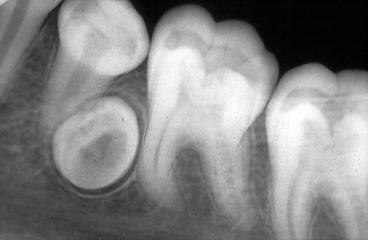(1)
Department of Pathology, Radboud University Nijmegen Medical Center, Nijmegen, The Netherlands
Abstract
Normally, the human dentition counts 32 permanent teeth whereas the deciduous dentition contains 20. As already briefly mentioned in Chap. 1, teeth develop via a series of interactions between odontogenic epithelium and neural crest-derived ectomesenchyme of the early jaw primordia. While considerable information is now available on how these molecules interact to produce an individual tooth, much less is known about the processes that control overall tooth number within the dentition. However, it has increasingly became clear that both a too high and a too low number can be traced back to a broad area of genetic changes. These numerical aberrations may occur as part of a more general syndrome as well as an isolated feature.
Introduction
Normally, the human dentition counts 32 permanent teeth whereas the deciduous dentition contains 20. As already briefly mentioned in Chap. 1, teeth develop via a series of interactions between odontogenic epithelium and neural crest-derived ectomesenchyme of the early jaw primordia. While considerable information is now available on how these molecules interact to produce an individual tooth, much less is known about the processes that control overall tooth number within the dentition. However, it has increasingly became clear that both a too high and a too low number can be traced back to a broad area of genetic changes [1, 2]. These numerical aberrations may occur as part of a more general syndrome as well as an isolated feature [3, 4].
Supernumerary Teeth
Supernumerary teeth, or hyperdontia, refer to the teeth that form in addition to the normal number. They can be associated with a syndrome or they can be found in non-syndromic patients [3–5]. Supernumerary teeth occur as mesiodens, between the maxillary central incisors, or can be located in the premolar-molar region as supernumerary premolars or supernumerary fourth and fifth molars (Figs. 3.1 and 3.2). These supernumerary teeth may have a normal morphology or may show little or no resemblance to the other teeth. A mesiodens usually is peg-shaped with root development at the similar stage or ahead of that of the adjacent teeth. Supernumerary premolars and molars may show more variation in size and form. Clinically they may cause retained or delayed eruption of permanent teeth. In general, a low number of supernumerary teeth are not related with additional abnormalities, whereas a higher number of them usually are associated with other conditions such as cleft palate and cleft lip or with variable syndromes [5]. Hereditary factors may play a role in both syndrome- and non-syndrome-related hyperdontia [1–5].



Fig. 3.1
Radiograph showing supernumerary tooth between both central maxillary incisors. This so-called mesiodens is the most common form of a single supernumerary tooth

Fig. 3.2
Radiograph showing a third premolar tooth, also one of the more common limited forms of supernumerary teeth
The prototypical syndrome with supernumerary teeth is cleidocranial dysostosis, an autosomal dominant hereditary disorder characterised by bone deformities among which are hypoplastic clavicles, short stature and dental abnormalities including variable numbers of supernumerary teeth that occur in almost all of them (Fig. 3.3) [5
Stay updated, free dental videos. Join our Telegram channel

VIDEdental - Online dental courses


